Curacao - Gallery
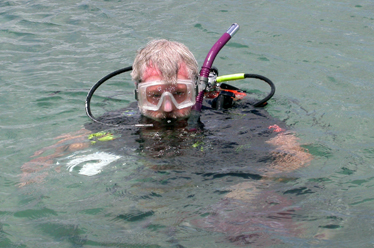
Deep Sea Video Taping
This is Bill Gerwick in his scuba gear for scientific explorations in the ocean waters of Curaçao in the Caribbean. This was our studio's first salt water underwater video taping experience. Our camera was protected with a special underwater bag, and we had tested it in freshwater back in the states, but it was stressful the first time we took our expensive camera into the ocean. We had to add over 30 pounds of lead to the camera housing to get the camera under water. Even with this weight, Patrick had to work hard to keep the camera submerged under the water.
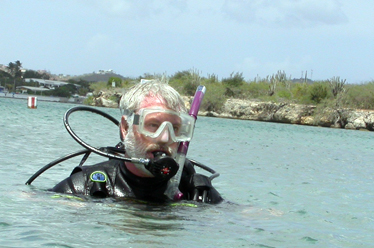
Video Taping in Shallow Water
After our deep sea taping, we followed Bill Gerwick into the shallower waters of the Spanish Waters Bay of Curaçao in the Caribbean. This is where Bill first discovered the "Mermaid's Hair" (a giant bacteria) which produced Curacin A. We were able to videotape this fluffy, reddish colored bacteria back underneath the mangrove, growing down in trellises. However, taping in shallow waters presented different challenges from the deep-sea work, as we had to move very slowly and carefully or we stirred up so much silt that it clouded the image.
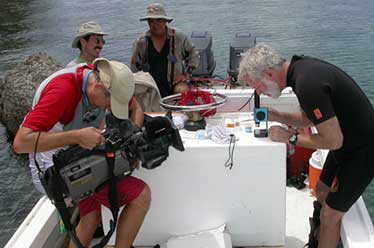
Taping "On-board Lab Work"
By taping on the boat, we were able to show viewers the scientific equipment Bill uses immediately after returning from a dive. Once out of the water the beautiful reddish "mermaid's hair" suddenly looked like blackish matted fiber. Bill says out of the water, "mermaid's hair" looks more like something you might dig out of your shower drain! But under the microscope we were able to see the algae's cells lined up like a row of coins.
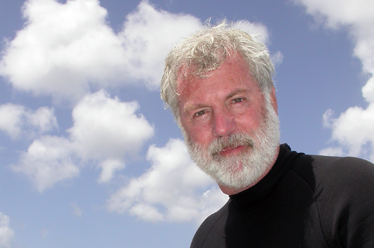
US Scientist Bill Gerwick Partners with Curaçao
Oregon State University researcher Bill Gerwick expressed extreme concern about the new development he found under construction on the banks just above Spanish Waters where he first collected the blue-green algae. He explained that while similar algae is found in other nearby bays, only algae from Spanish Waters contains the chemical compound named Curacin A. Early clinical studies showed that it had powerful anti-cancer properties.
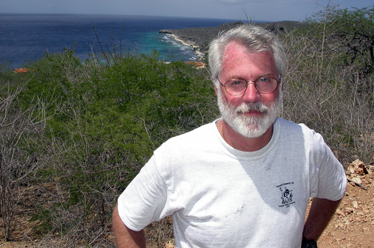
Unique Location Showing Both Arid Lands and Ocean
When it came time for the on camera interview, we actually had more difficulties finding an "ideal" location than we expected. We needed to show both the ocean and the arid environment, and yet be away from traffic noise, barking dogs, and playing children. After 2 hours of searching we found an isolated road leading to a remote overlook. Unfortunately, by this time, the weather was quite hot, requiring several "cool down" breaks for crew and talent alike.
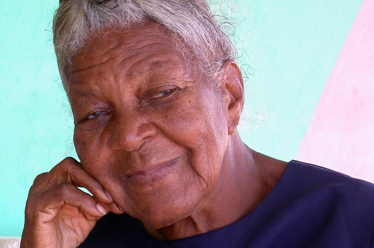
Sister Carmen the Healer
It was Sister Carmen who first sparked Dinah's interest in healing herbs. When Dinah was still young, Sister Carmen came to her house to iron clothes. As she ironed, she would tell Dinah stories about the people who came to her with illnesses and how she would use herbs to heal them. Dinah soon realized no one was documenting this knowledge. Although it was years before Dinah started collecting the local knowledge she says she never forgot Sister Carmen's passion for the local herbs.
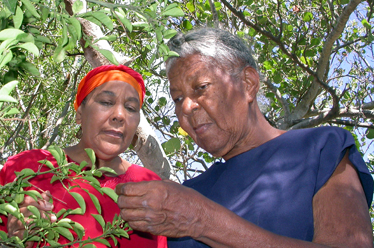
Sister Carmen and Dinah
Sister Carmen told us she was not able to get into the hills as often as she likes. However, when she does go, she finds many of her favorite herbs in short supply. So she has started raising her own native plants in her backyard garden. She was very relaxed with the camera and treated the camera crew as if they were old friends.
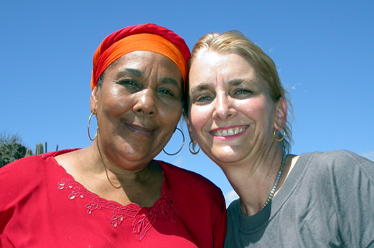
Dinah and Jeanne
After spending a week with Dinah, it is easy to see why everyone seems to love and trust her. She is a gracious, kind woman who seems willing to share anything she has. Our taping days started early, and we often had to work through the heat of the day. Yet Dinah never complained, even when she had people waiting for her herbal advice.
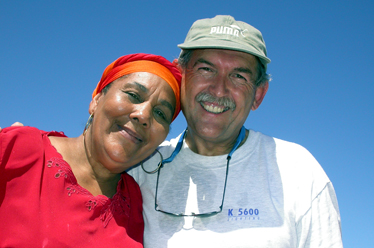
Patrick and Dinah
Patrick first learned about Dinah from the Internet where he saw her book documenting local herbs. Dinah not only went with us into the field several times, she also translated the local language of the healers into English - a painstaking operation.
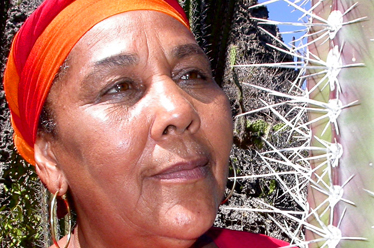
Dinah and a Cactus
Filming Dinah with the cactus and other plants was an adventure. You can tell she is happy to be out collecting plants, in spite of the high heat and humidity. When I asked her if she ever sang to the plants as she collected, she smiled and said, "But of course!" Immediately she broke into a lovely song. Naturally this footage made the final cut of our film. Being with Dinah, you soon realize she is silently singing to her plants all day.
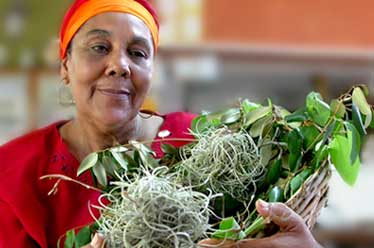
Dinah with Basket of Plants
Dinah clearly has a connection with the plants she collects for Den Paradera. Although her botanical garden has become a sustainable business, well known to tourists and locals alike, Dinah would have cultivated the 300+ species in her botanical garden even if it didn't bring in any money. In fact, in 1980 she quit a good paying job to devote full time to the garden. Luckily she has the full support of her family and two sons and their families to now help her run the garden.
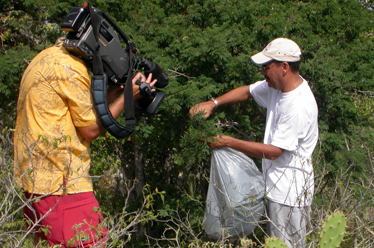
Filming Some of the Plants Being Collected
Our local science was provided by published biologist John DeFreitas of CARMABI - The Caribbean Research & Management Diversity. CARMABI invited us to review their base-line cataloging effort of the island's 500-plus plant species, 100 of which have bacteria-fighting properties. We went into the field several times with John, including this shot on the high, steep slopes of the Christoffel National Park. In fact, it was so steep, we had to use rope to climb up and down the rock face to get to the Divi Divi trees that John collects and monitors.
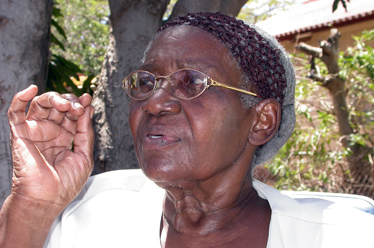
Cha Cha
When we got to Cha Cha's home, we were sad to see she is now in a wheel chair. She expressed extreme sadness that she was no longer able to hike in the hills and collect herbs. Considered very wise, locals come to her with their problems. She learned about healing herbs as a young girl from her mother's aunt.
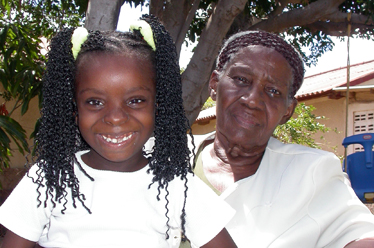
Cha Cha with Granddaughter
While the aging traditional healers are treated with great respect by their families and communities, none we interviewed had anyone in their families who is willing to invest the time to inherit their knowledge about plants. They all feel sorrow that aside from the work Dinah has made to document their knowledge, their insights will die with them.
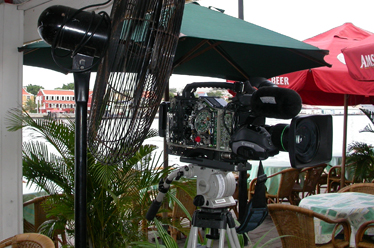
Humidity Problems Require Dramatic Actions
The weather in Curaçao during our taping was extremely hot and humid. We tried to avoid taping outside during the worst parts of the day and were always thoughtful in our moves between air-conditioned and outdoor locations. However, one morning the humidity was so high we had to open the camera and use a nearby fan from a sidewalk cafe to "dry out" the internal boards.
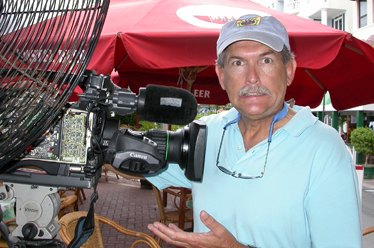
Patrick Gets the Camera Running Again
Although Patrick looks distressed in this photo, he was fairly confident he could get the camera working again in about 30 minutes. Luckily our studio engineer had anticipated the high humidity problem and had given Patrick careful instructions on solving the problem in the field with only a Swiss Army knife!
For more information about this website.
Contact the webmaster to report any problems with this site.
New Mexico State University is an equal opportunity/affirmative action employer and educator. NMSU and the U.S. Department of Agriculture cooperating.